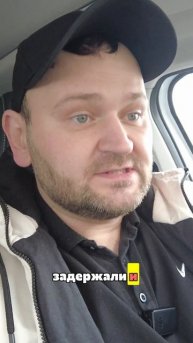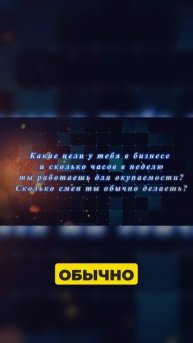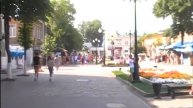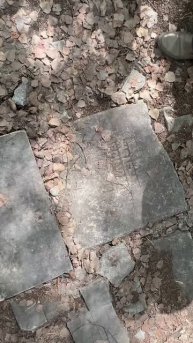Space Time Continuum and “Lazarus” Disconsciousness Coma, Psyche, and PTSD DIV 24 Presentation, A
Time
Can it be postulated that time is a solid, static, trans-dimensional unit with no point of reference that challenges logic and defies comprehensive description? Is it a set, bidirectional infinity that exists in the “always”? If so, it would be similar to God, who is described as being “from everlasting to everlasting” (Psalm 90:2).
Although traditionally described in terms of past, present, and future (Elman, 1990), time “is.” It is the dynamic present. That is why we cannot experience the past or the future. We can only experience the “now.”
Alomeg
How is the dynamic present or the “now” experienced? Is a natural mechanism engaged?
I hypothesize that such a mechanism exists, and I call it alomeg. I surmise that it is the fifth dimension and is a distinctive force generated at conception that links each person to the space-time continuum. It is an exclusively human essence that is as unique to each person as one’s DNA (Travers & Muskhelishvili, 2015).
Perhaps it can be further posited that alomeg operates apart from the suprachiasmatic nucleus, which “regulates most circadian rhythms in the body” (Ma & Morrison, 2021). Alomeg causes us to wake from unconsciousness and ask, “What time is it?” or “Where am I?” In other words, alomeg irresistibly impels us to consciously resync with the space-time continuum after a period of unconsciousness.
Can the degree of alomeg awareness be assessed? It seems probable that, diagnostically, a clinician can accomplish this by using the Glasgow Coma Scale (GCS).
“The Glasgow Coma Scale provides a practical method for assessment of impairment of conscious [my emphasis] level in response to defined stimuli. … It is an integral part of clinical practice and research across the World” (Farus-Brown et al., 2020).
These three questions are used on the “verbal responses” part of the GCS to assess cognitive impairment on a conscious level:
• Can you tell me your name?
• Can you tell me what year and month it is?
• Can you tell me where you are? (Farus-Brown et al., 2020).
The natural assumption is that you should collectively know your unique identity and current position on the space-time continuum. If not, you are deemed consciously (and perhaps cognitively) impaired.
When penal institutions in the U.S. and elsewhere punitively isolate prisoners by putting them in “the hole,” officials are not only separating them from the general population but are also disrupting the communicative link of consciousness between the prisoner’s alomeg and the space-time continuum.
This solitary confinement in a windowless room can result in mental illness for the prisoner and challenges medical ethics (Metzner & Fellner, 2010).
Disconsciousness
While the definition of “disconsciousness” is robust with several levels, simply put, “disconsciousness” is the uncomfortable or disconcerting feeling, awareness, or sense that one’s alomeg is out of sync with the space-time continuum. This is why we sometimes awake, almost in a panicked state, to determine what time it is.
While the conscious, preconscious, and unconscious have been held in juxtaposition with the subconscious in the literature dating back to the beginning of the 20th century (Emerson, 1919; Kihlstrom et al., 1992), the thought of a “disconscious” has not been entertained.
Coma
When a person wakens from a “deathlike” coma as Lazarus was resurrected from the dead (John 11:11-14), the objective is to find if they can consciously reorient to self, time, and place (Neil et al., 2000; Robinson et al., 2003).
Essentially, an attempt is being made to determine if the patient is aware of the synchronization, or lack thereof, of their alomeg with the space-time continuum.
As noted earlier, the Glasgow Coma Scale (GCS) facilitates this assessment.
Psyche
While there is an absence of consensus on the precise definition of “psyche,” Jung et al. (2014) argued for the metaphysical “unity of consciousness [my emphasis], which is equated with ‘psyche’” (p. 96). Irrespective of how "psyche" is defined in the literature (Jung, 2014), it is distinct from alomeg.
For instance, when the psyche or mind is not self-aware or is in disarray, alomeg maintains its constancy and connection with the space-time continuum, with or without consciousness.
Post-Traumatic Stress Disorder (PTSD)
Effective pharmacotherapy for PTSD includes pharmacological treatment medications like serotonin reuptake inhibitors, tricyclic antidepressants, and monoamine oxidase inhibitors (Albucher & Liberzon, 2002; Wampold et al., 2010). However, the space-time continuum is often left out of the equation.
Episodic descriptions like “flashback” or “relive” include the continuum but discount that each episode is new, timeline independent, and should be approached as such. This maneuver may engender the development of a new praxis in treating persons with PTSD.
(References available upon request.)
Видео Space Time Continuum and “Lazarus” Disconsciousness Coma, Psyche, and PTSD DIV 24 Presentation, A автора Спокойствие здесь
Видео Space Time Continuum and “Lazarus” Disconsciousness Coma, Psyche, and PTSD DIV 24 Presentation, A автора Спокойствие здесь
Информация
19 декабря 2023 г. 1:02:26
00:07:46
Похожие видео
 Первые шаги в бизнесе такси 🚖-youtube
Первые шаги в бизнесе такси 🚖-youtube Как справляться с пассажирами в алкогольном опьянении 🍷11-youtube
Как справляться с пассажирами в алкогольном опьянении 🍷11-youtube Красивая расслабляющая музыка! Музыка осени!
Красивая расслабляющая музыка! Музыка осени! Релаксация ! Вкусное лето ! Игорь Чернуха ! ( клип , музыка) Ваня Арнаут! ( ритм - гитара )
Релаксация ! Вкусное лето ! Игорь Чернуха ! ( клип , музыка) Ваня Арнаут! ( ритм - гитара ) Conrado, Luiza & Paula - Voo de Helicóptero - Rio de Janeiro - Brasil - 2023 - VR 360 VIDEO
Conrado, Luiza & Paula - Voo de Helicóptero - Rio de Janeiro - Brasil - 2023 - VR 360 VIDEO 1000043581.mp4
1000043581.mp4 МУЗЫКА для взбадривания! Жизнь в большом городе
МУЗЫКА для взбадривания! Жизнь в большом городе Доброе утро,9.05.25#деньпобеды #праздник #доброеутро #туман #история из жизни #воспоминания
Доброе утро,9.05.25#деньпобеды #праздник #доброеутро #туман #история из жизни #воспоминания Музыка для глубокого сна и восстановления сил. Therapeutic music for deep sleep and recuperation
Музыка для глубокого сна и восстановления сил. Therapeutic music for deep sleep and recuperation Relaxing Sleep Music • Deep Sleeping Music, Relaxing Music, Stress Relief, Meditation Music 《Flying
Relaxing Sleep Music • Deep Sleeping Music, Relaxing Music, Stress Relief, Meditation Music 《Flying 1000047207.mp4
1000047207.mp4 музыка для души
музыка для души Спонтанное пение часть 3 | Природное пение | + практика "Активация природных механизмов" | Veraslav
Спонтанное пение часть 3 | Природное пение | + практика "Активация природных механизмов" | Veraslav RELAXING MUSIC -1 SAKİN MÜZİKLER-1
RELAXING MUSIC -1 SAKİN MÜZİKLER-1 Relaxing Classical Mornings
Relaxing Classical Mornings СЕВЕРО-ВОСТОЧНОЕ КЛАДБИЩЕ. ВЛОГ НА КАНАЛЕ
СЕВЕРО-ВОСТОЧНОЕ КЛАДБИЩЕ. ВЛОГ НА КАНАЛЕ ПЛЯЖ ЗИМОЙ В LLORET ВЕЧЕРНИЕ ЗАКАТЫ , НЕБО, ЗАМОК PLAYA COSTA PUESTO DE SOL СРЕДИЗЕМНОЕ МОРЕ ЛЬОРЕ
ПЛЯЖ ЗИМОЙ В LLORET ВЕЧЕРНИЕ ЗАКАТЫ , НЕБО, ЗАМОК PLAYA COSTA PUESTO DE SOL СРЕДИЗЕМНОЕ МОРЕ ЛЬОРЕ Relaxing Music for Healing Relaxation Meditation and Sleep #релаксация
Relaxing Music for Healing Relaxation Meditation and Sleep #релаксация Первые цветы.
Первые цветы. 200 Most Beautiful Romantic Guitar Music - Beautiful Relaxing Guitar Music for Stress Relief
200 Most Beautiful Romantic Guitar Music - Beautiful Relaxing Guitar Music for Stress Relief
